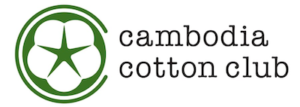【The Reality of Clothing Made from Bamboo (3)】
As I was researching, there was one thing I just couldn't figure out.
That is because a survey conducted by the Japan Food Analysis Center showedthat bamboo rayon has antibacterial properties.Although I asked about this matter by e-mail,I did not receive an answer.
About the same matter,I called a manufacturer in Japan that deals with bamboo rayon.The summary is as follows.
Bamboo rayon has antibacterial properties derived from bamboo,although these properties are not expressed in numerical values. Its composition isa trade secret, so they cannot say. But clearly, the understanding is that bamboo rayon hasantimicrobial properties derived from bamboo."
This manufacturerused to make bamboo rayon at the largest factory in China. ( They said thatthey are now making it at a different manufacturer.)
When I asked the Tokyo Metropolitan Industrial Technology Research Instituteabout the antimicrobial properties of bamboo rayon,I received the following response from the chief researcher.
*Antimicrobial performance of bamboo fiber
”Bamboo has a clean image,and many bamboo rayon products currently on the market claim antimicrobial properties as a feature.Therefore,I investigated the antimicrobial properties of bamboo fibers, which are the raw material for bamboo rayon."」
"The much-discussed antimicrobial properties could not be confirmed.This result is inconsistent with the antimicrobial performance claimed for bamboo rayon products made from bamboo fibers."
In other words,bamboo rayon had almost no antimicrobial performance.Even if it did have antimicrobial properties,it "does not meet the acceptance criteria (2.2 or higher) for antimicrobial and deodorizing treatment by the Textile Products New Function Evaluation Council(currently the Textile Evaluation Technology Council, Inc.)
However, why did the Japan Food Analysis Center (JFAC)recognize the antimicrobial properties of bamboo rayon?
My research on this,including domestic and international papers, revealed the following.
A. The majority of bamboo fiber currently on the market isnot bamboo fiber itself, but rayon made from bamboo pulp.
B. No differences can be found between bamboo rayon and conventional rayon made from wood pulp.
C. It contains sulfur, a characteristic unique to bamboo rayon.
It is the "C" that is important.
Sulfur has a bactericidal effect. It is an ingredient in hot springs.In minute quantities, it does not pose a health hazard.However, if disposed of in large quantities, it is a toxic substance that is one of the causes of air pollution and acid rain.When it reacts with water to form sulfur oxides, it produces sulfuric acid and sulfurous acid.
I called the largest manufacturer in China and the answer was that there were no impurities mixed in with the shipped product.However, it is true that large amounts of sulfur are used in the manufacturing process of bamboo rayon..A check of local Chinese newspapers revealed that the effluent from the bamboo rayon factory was one of the reasons for the environmental destruction of the river.
In conclusion, it can be said that
Why do bamboo fibers, the raw material of bamboo rayon, have no antimicrobial properties, but they do when they are turned into rayon?The reason involves sulfur mixed in during the manufacturing process of bamboo rayon.
※There is no possibility that the inherent antimicrobial substances of bamboo as a plant will be transferred to rayon.
As environmental issues become more serious, a variety of products that claim to be ecological are on store shelves. It is almost impossible for consumers to understand even the production background.It seems that the current situation can only be left to the corporate ethics of the manufacturers who produce and sell the products.
The current situation seems to leave it up to the business ethics of the manufacturers who produce and sell the products..
(END)
25th/October/2014
